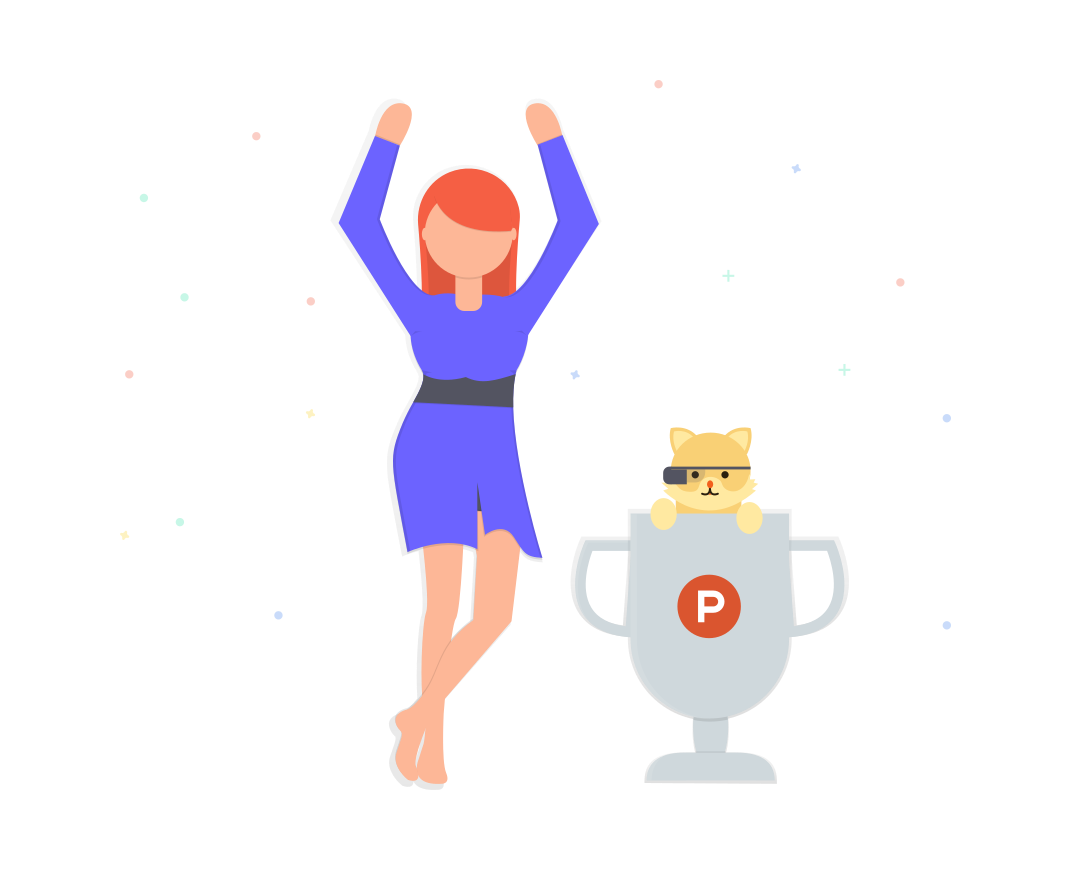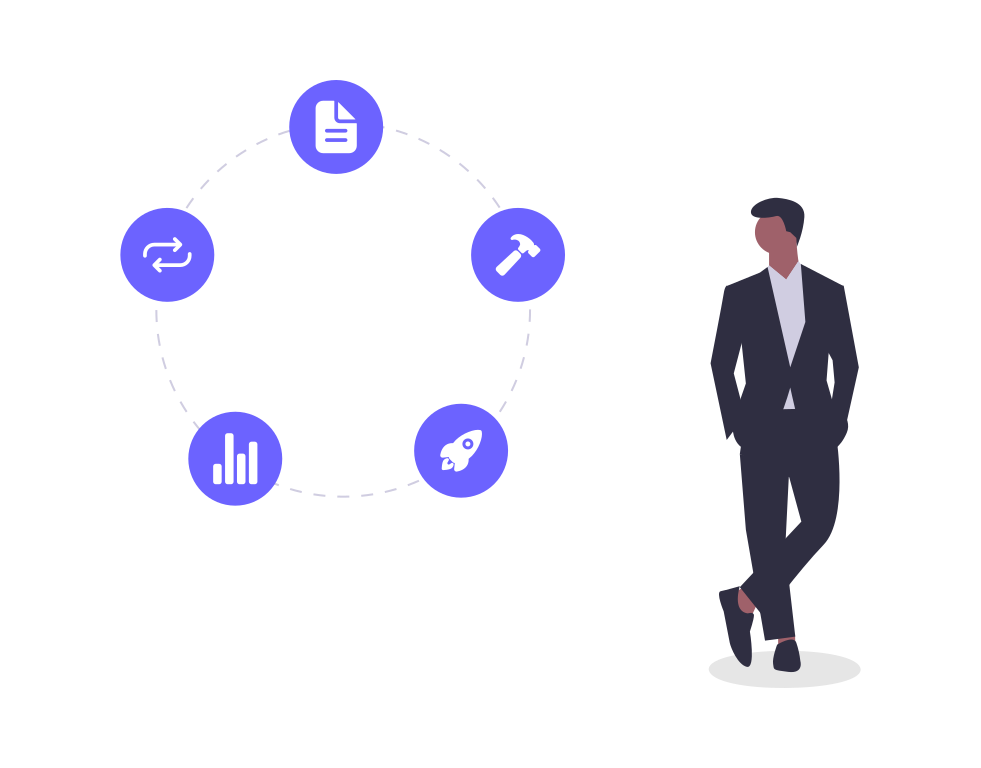Entrepreneur’s guide to building a SaaS that converts

Creating a successful modern Saas MVP can be a daunting task. With so many options available to entrepreneurs, it’s important to understand the key components that will make your MVP stand out and become lovable.
The first step to Nailing your Saas MVP is to know your target audience. Understanding who your target audience is and what their needs and wants are will help you create an MVP that is tailored to them. The next step is to make sure your MVP is user-friendly. This means that it should be easy to navigate and understand, as well as aesthetically pleasing.
Focus on The user experience of your MVP is crucial: making sure that the navigation is intuitive, the UX is smooth, and the overall look and feel of your MVP is modern and engaging. By taking the time to focus on the user experience, you can make sure your MVP is lovable and well-received by your target audience.

Pre-requisites: pain points, validation, and early traction
Identifying pain points is the first step a SaaS builder should take when developing a product. Pain points are the problems the customer is trying to solve and the areas where the product can help. One way to identify pain points is to conduct customer interviews and surveys.
A more practical approach consists of looking for existing product negative feedback and coming up with a better proposition of value. Once you have identified the ideal customer’s pain points, you should validate them with your early users.
Thereafter, you should look to achieve early traction before launching the product. This could include getting pre-orders from customers, creating a waiting list, or running beta tests. Getting early traction helps you understand the customer’s interest in the product and the potential for success. This feedback can be used to refine the product and make any necessary changes before the official launch.
Our advice: do not start building your MVP before validating it first. Having an audience and a distribution channel is crucial to successfully achieving this difficult goal. Time to focus on the MVP now!
UI first or UX first for a Saas?
Many founders or builders will start with the UI first, others with the code, and finally others with the UX or the functional specifications and backlog.
Pro of UI-first: Working on the UI before product building can be beneficial because it can give the user a better overall experience when they use the product. It can also help the developer better understand how best to utilize the product and what features would be most beneficial to the user.
Con of UI-first: Working on the UI before product building can be time-consuming and can take away from the time spent on the actual product building. This can be a problem if the product needs to be released in a timely manner as the UI may take more time than expected.

We believe there's no unique recipe to successfully building your MVP.
However, our approach toward moving fast while iterating and interacting actively with your customers consists of delivering preliminary/imperfect versions of your MVP, regularly yet consistently.
For instance, our development process at Stimpack consists of each feature:
- Working on the feature's UX since you don't want your users to feel lost. UX research is key here since it's the starting point of the UX-first design process.
- Implementing the feature: it depends on your technological stack (code vs. no-code and languages/technologies)
- Polishing the UI, keeping it minimalistic to save development time.
- Delivering the feature and getting feedback on it, alongside feature requests.
- Making sure your product integrates ways to collect this feedback.

Modern AI-powered MVP build loop
The modern MVP approach is a process that begins with a backlog of ideas and ends with collecting feedback and tracking metrics. This iterative process should be employed by any SaaS builder to ensure the best possible outcome for their product.
Learn and keep your backlog updated
The first step in the process is to create a backlog. This includes brainstorming ideas, gathering customer feedback, and looking at existing trends in the market. Once the ideas have been collected, you should prioritize the features according to their importance. This will help them focus on the most important features first, thus making the development process more efficient.
A simple framework can help you measure a feature's priority matrix (or similar framework):
feature_priority = feature_importance / feature_complexity
Time to iterate on your features. Following battle-tested processes like Eric Ries's Lean Startup methodology can help a lot in getting started and iterating actively.

Build & Ship continuously
The second step is to ship the product fast: as soon as possible. This means that you should not wait for all features to be developed before releasing the product. This will allow you to obtain feedback quickly and make changes based on the feedback they receive. It will also allow you to identify any bugs or issues that need to be addressed.
Shipping in a modern matter has to be with AI-first tools. This can be done using adequate smart AI services or by integrating AI APIs directly into your product.
Building and shipping fast are better said than done. Traditional ways to achieve that consist of having ritualized development/coding processes, and externalizing part of your implementation workload. Bootstrapped solopreneurs, having scarce resources by nature, may not be able to do that.
- A landing page for your next big idea.
- A minimalistic micro-saas product/boilerplate.
- Full access to the codebase in order to fine-tune your product.
The goal here is the same: help you ship fast better products!
Measure abundantly
The third step is to collect feedback from customers. This can be done by using surveys, focus groups, or interviews. The feedback should be used to make changes to the product and to prioritize future development. It is also essential to track metrics related to the feedback.
A couple of modern ways to gather feedback are:
- Creating Typeform or other a Tally.so surveys
- Create a Slack or Discord server and gather your early adopters on them
- Use tools adapted to feedback collection & ticketing (like canny.io)
- Be present on social media and get notifications on your hashtag or handle
- Integrate a feedback button or section in your product

Iterate, the automated way
Iterating on the development loop can be done manually, but may help using CI/CD processes. Making use of automation platforms like Zapier, Slack bots, or other integrations can immensely help you toward creating your own product shipping machine.
Note for Micro-saas products
Micro-saas products as more common vertical Saas platforms follow this same development process. The small difference is that for a Micro-Saas, you only have to focus on a single (or very limited set of) core feature(s). Your goal is to ship and launch it fast, ideally in a matter of weeks.
Our advice: if your Micro-saas has enough initial traction, it may be a good idea to expand it to a fully-fledged Saas platform.
Note for full-stack Saas products vs. backend-only API products?
While developing a full-stack product involves UX/UI and coding parts, implementing a backend-only product is slightly different: there's no UI involved. However, we may still consider that a backend has to be actionable, easily callable, and eventually RESTful. The UX part is still important here.

Pitfalls to avoid while shipping your Saas MVP
While building your product's MVP, here is a list of common pitfalls to avoid:
- Not conducting enough user testing: without user feedback, you can't be sure if your product meets user needs or is easy to use.
- Not properly setting up security protocols: failure to secure your product could lead to data breaches and other serious issues.
- Over-engineering features: focus on the core features that solve the customer's problem instead of getting bogged down with too many features.
- Forgetting about the pricing strategy: this should be included as part of your MVP top requirements.
- Ignoring customer feedback: it's important to listen to user feedback and continually refine the product to meet their needs.
Shipping and Launching a Saas is not an easy task: using the right platform for the job is definitely a game-changer. This is the philosophy that inspired the creation of our product: Stimpack.

Transforming an MVP into an MLP using AI
Minimum Lovable Product (MLP) is a term that has become increasingly popular in the product development process. This concept is based on the idea of creating a product that is just good enough for customers to love it. It is an iterative process, where the developers focus on the features and components of the product that customers find most desirable, and continually improve and refine them over time. The goal of MLP is to create a product that is both minimal (in terms of features and components) and lovable (in terms of customer experience).

The goal of MVP is to create a product with the least effort and resources possible. Whereas MLP focuses on creating a lovable product with minimal effort, MVP focuses on getting a product to market as quickly as possible.
The difference between both MVP and MLP is small: MLP has a stronger focus on the UI while MVP is mainly about functionality. We also believe that: Lovable > Viable sometimes and the opposite for other use cases.
Generative AI can help create content adapted to a specific user need. By providing optimized prompts, you can create unique content and make hyper-personalized products. Prompt Engineering is a new field that's actually gaining huge traction.
Finally, MMP stands for Minimum Marketable Product: they are the version of your product you'll use for Marketing purposes.
Stimpack: The first Launch OS dedicated to fast-moving builders
We believe in the MLP and MMP approach at Stimpack and aspire to help you ship your own products following a modern approach.
Stimpack is an all-in-one prelaunch platform: it's the 1st Saas conceived for product builders enabling you guys to create prelaunch campaigns, gain early traction & launch your products, the fast and easy way! Interested in being part of the adventure? We are actively looking for core users to enroll in the Alpha.

Always looking forward to hearing from our fellow Stimpackers.
We are on social media,
Twitter: @StimpackHQ
Twitter: @SaidAitmbarek
Linkedin: linkedin.com/company/stimpack
Blog: blog.stimpack.io/
Saïd – Founder @Stimpack
